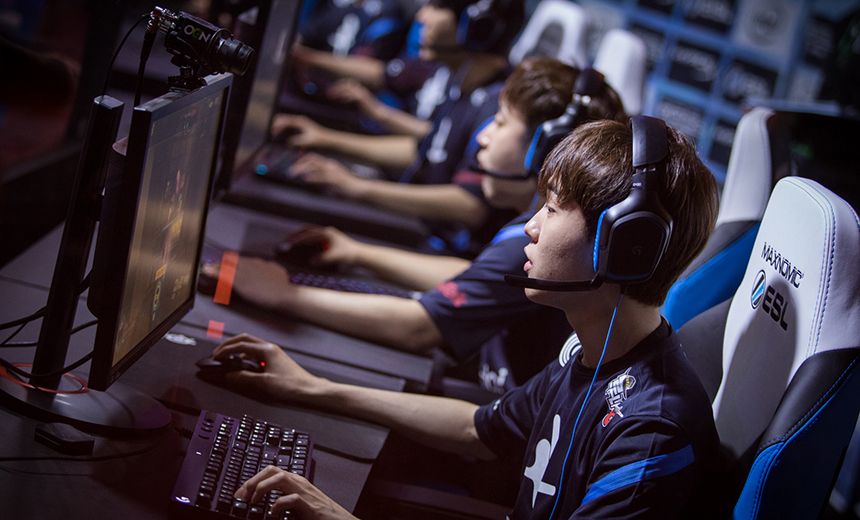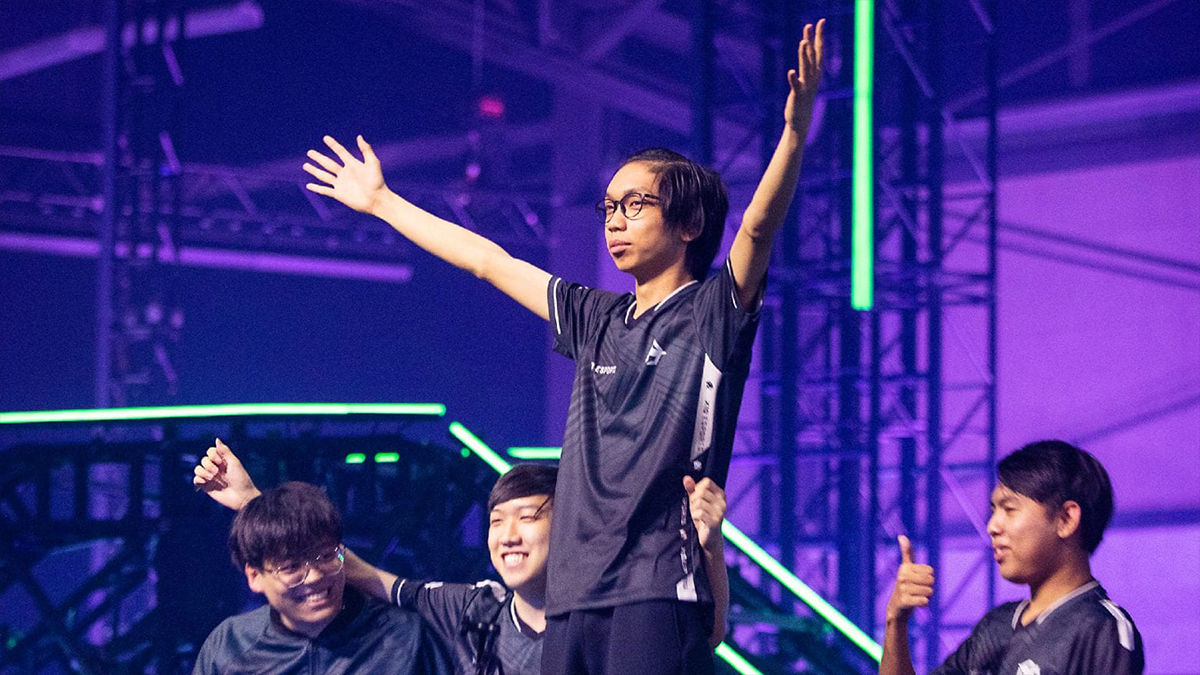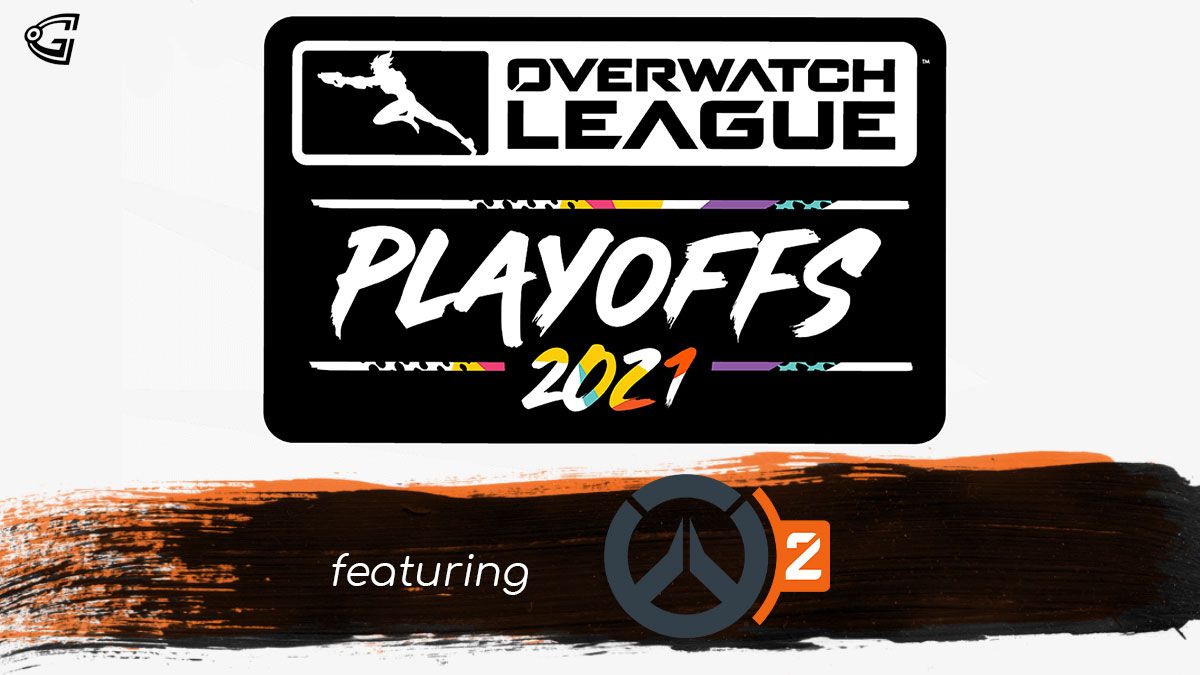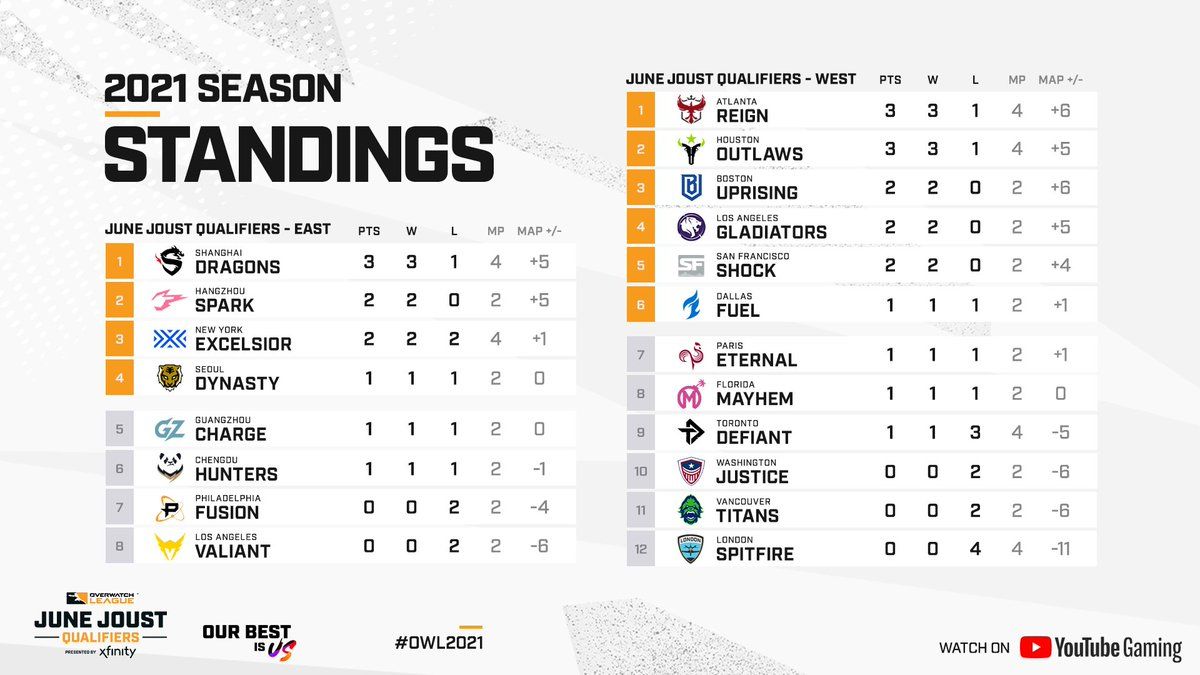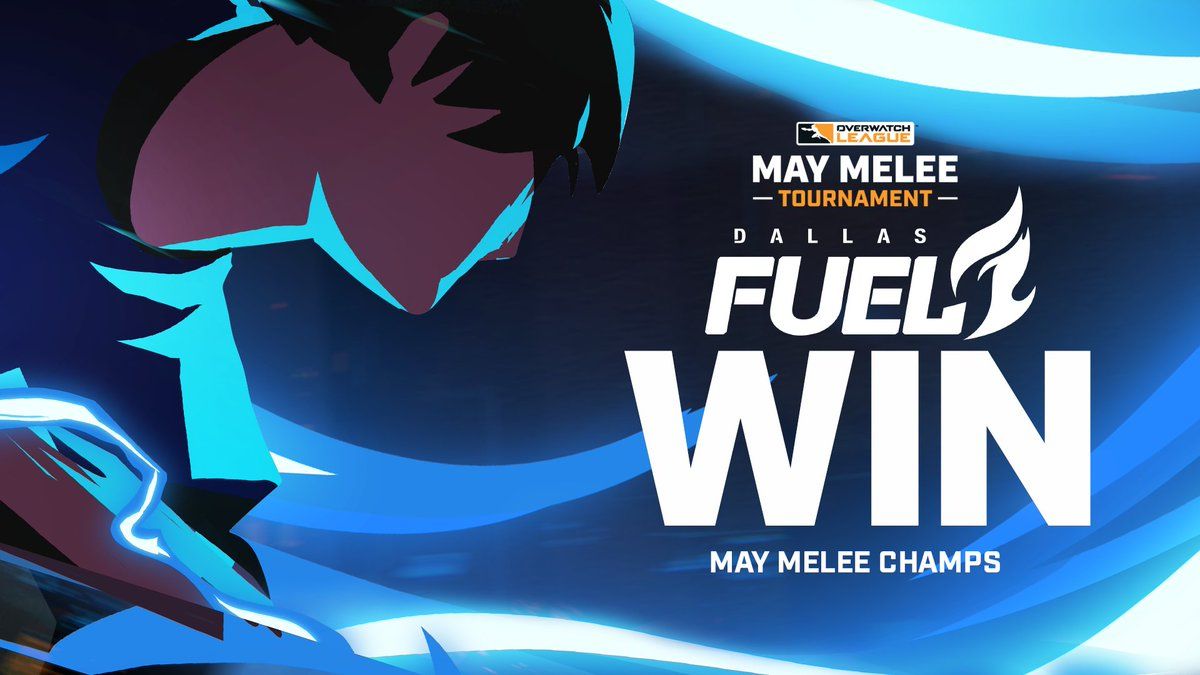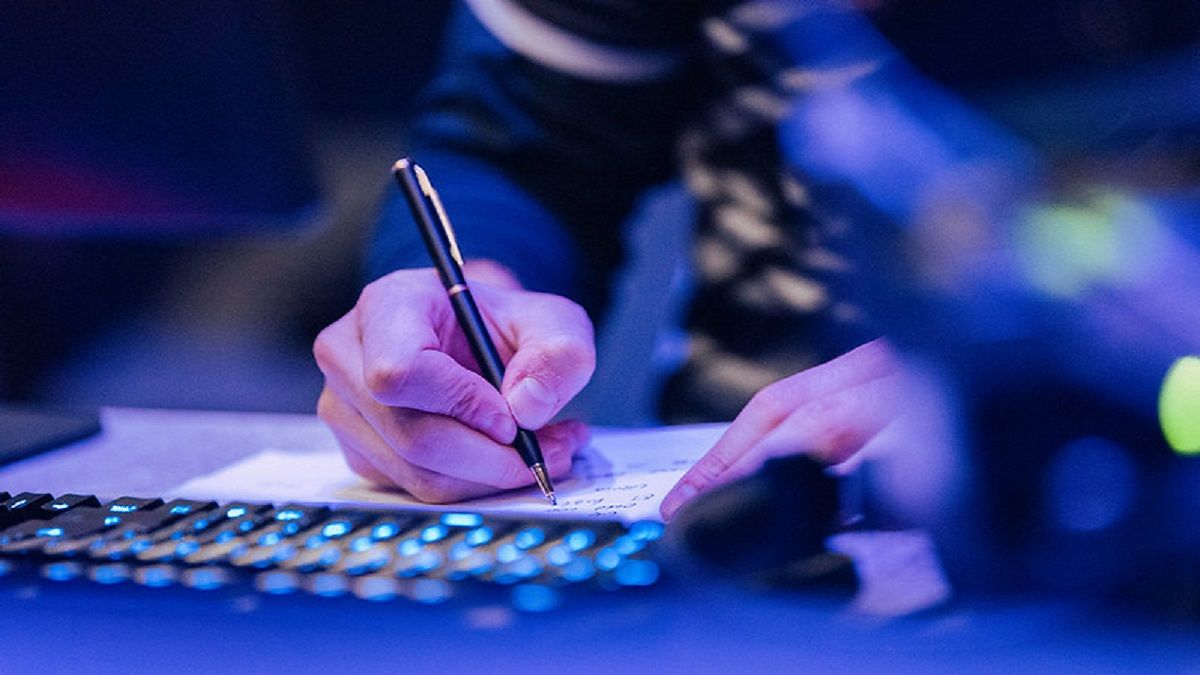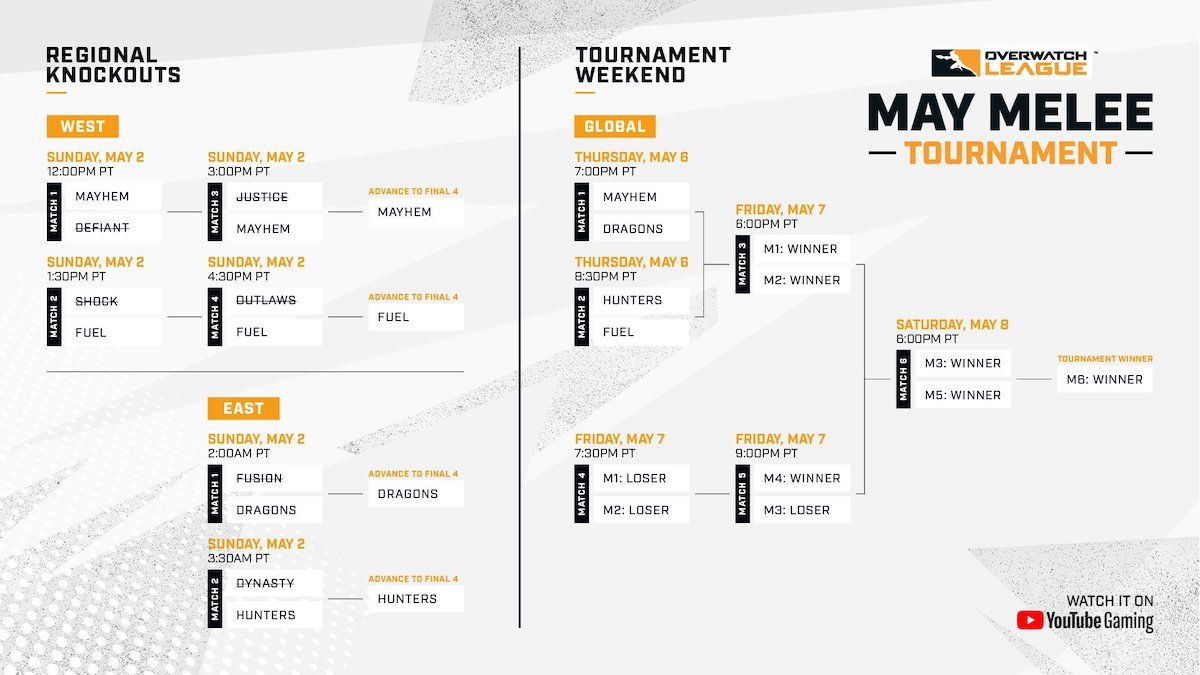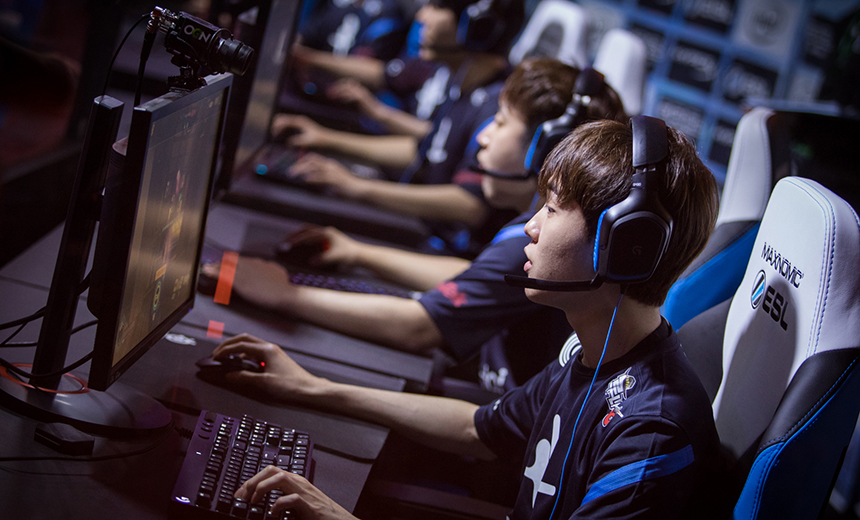
Photo: Helena Kristiansson / ESL
After months of searching for gold and numerous second place finishes, Lunatic-Hai (LH) officially became the best team in the world, conquering season two of APEX. On the big stage in Seoul, Korea’s brightest talents crushed the Cinderella dream of RunAway in front of a screaming crowd. The curse of the Kong was broken.
LH’s ascension to royal status has been long overdue. Four players of its current roster became world champions with the South Korean national team and it was expected that the same success would follow upon their return to the club scene. Even the scandal around and subsequent retirements of Tae-Jun “LEETAEJUN” Lee and Dong-Geun “Dean” Geum were not seen as a hindrance. On the contrary, it was seen as a step towards reinvigoration and Seung-Joon “WhoRU” Lee and Joon-Hyuk “Zunba” Kim bore on their shoulders the hopes of all LH fans that this would end the string of silvers, a curse that started at Overwatch Power League and followed the team through APAC Championship and IEM Gyeonggi, too.
It is not to say that 2016 LH did not deserve those three second places. The team was without a doubt at the top of the tree but visibly struggled in several areas. Hitscan dps In-Jae “Esca” Kim was still developing and both his Tracer and Soldier were behind the local pacesetters on the position such as Joon-Hyuk “Bunny” Chae or Yeon-Oh “Nanohana” Hwang. LH played with a characteristic aggression and a diving style and it made enemies fall to their knees trembling but it was almost as if they were more vicious than smart with it.
The old LH trampled and raided like a barbarian horde. The new LH added precision and finesse to their barbarism. In 2017, they stopped butchering and began executing.
Focused excellence
Three major traits define the contemporary championship roster of LH, with the first their pursuit of perfection in their comfort zones.
In a previous article, I juxtaposed LH with Meta Athena as the most diametrically opposed team in Korean Overwatch. At the time, Meta Athena were walking the royal road and had earned admiration through their creative use of strategy and unmatched tactical diversity. They had played almost every hero, attacked from every angle and defended in every possible way in a chameleon-esque playstyle.
LH are nothing like that. They do not adhere to Athena’s beliefs that diversity is the way to win. They believe that perfection beats unpredictability and that if they achieve excellence in something it will be incredibly tough for their opponents to find a counter, if one exists at all.
LH are therefore one of the most focused teams in Korean Overwatch Whereas most teams would juggle two equally represented builds, LH would favor a classic 2/2/2 in the majority of the cases. The only other top Korean team which values focus so strongly is KongDoo Panthera and their signature triple tank with Kyo-Min “EVERMORE” Koo on the Roadhog.
Lunatic-Hai believe that perfection beats unpredictability.
In season two of APEX, LH’s composition focus reached climax, which strongly correlates to their eventual success. It didn’t make sense for LH to stray from the norm, because the players didn’t have deep hero pools to begin with and for their surgical aggression to work everybody needed to be in sync. WhoRU was always on Genji. Miro switched between just two heroes, and the same was true for Zunba. EscA remained LH’s most diverse player with his preferred Tracer / Soldier / McCree with Mei-on-the-side portfolio.
More than 82% of the time, LH remained loyal to their 2/2/2. 60% of their games featured a combination of only 12 heroes.
Almost a quarter of all their APEX Season 2 playtime featured the same five heroes: Winston, D.Va, Genji, Tracer and Lucio. Unlike Meta Athena, who adopted a positional playstyle to make up for their lacking in mechanics, LH perfected the handful of heroes they knew in order to not have to adapt in the first place. The latter could have led to another silver medal, or worse.
In a way, LH’s road to a championship reminds us of EnVyUs (NV) in the previous season, because it was founded on the same fundamentals. NV hoisted the trophy having played the same exact line-up a quarter of the time. They didn’t need to diversity because the enemy couldn’t find the answer. It is adaptation that begets adaptation and similarly linear improvement is answered by linear improvement. Being so specialized and fluent in what they do, staying ahead of the competition was easy for LH and perfecting their original craft took them to the championship.
To continue the NV parallel, LH’s playstyle is a double edged sword and can turn from successful to struggling in a matter of seconds. In a previous article, I wrote:
Hence, the raised skill cap on the flex role mentioned earlier comes as a double edged sword. EnVy could either seize the opportunity and re-assert themselves as a powerhouse or risk losing the war to more diverse teams.”
What is a focused perfection for LH now will not stay the same forever and there are glaring gaps in the their playstyle that need fixing. WhoRU has been phenomenal on Genji but lacks another character on that level, and the same discrepancy is visible between Miro’s Winston and Reinhardt. EscA is flexible on the hitscan role, but his grand finals showing notwithstanding, he’s been an obvious weak link. WhoRU took the finals MVP reward for his performance but in reality its RyuJeHong who’s been getting LH out of tough situations consistently and is the team’s most stable and reliable member by far.
For now, however, the ball is with LH’s competition to find answer to their focused perfection.
Being so specialized and fluent in what they do, staying ahead of the competition was easy for Lunatic-Hai.
Visceral aggression
LH’s playstyle is a direct result of said focus. Specializing in heroes such as Winston, Genji and Tracer, LH are known to play a very aggressive game, with two or three-man hit squads which dive to decapitate enemy supports.
On the battlefield, LH are a delicate but highly efficient ecosystem. They need to be flawless on their heroes to play the way they do—which they are—and this is the only style that makes sense for them. In fact, the few maps they dropped during APEX Season 2 were partly because they deviated from the classic Lunatic line-up and experimented with un-mastered heroes on defense such as Mei, Roadhog, Symmetra, Pharah or Torbjorn which don’t make use of what LH excel at.
Although LH built their early achievements on their uncanny ability to jut into enemy lines and deliver deadly, lightning fast incisions, they knew they had to improve and evolve with the competition.
But here’s what makes LH not just good or great, but a championship team. Much like Meta Athena—whose evolution resulted in an even wider hero pool—LH developed in the only way that made sense for them: Put aggression to other purposes.
Aggressive defense is a relatively new trend in competitive Overwatch. Traditionally, defenders would use narrow alleyways, or archway chokepoints, or anything else that allows them to funnel the attackers right into defenders’ concave. This is how Overwatch was played, too, in the early days, but less so today. From the Carbon Series desk, iconic duo Robert “Hexagrams” Kirkbride and Adrew “ZP” Rush explained how current Overwatch teams do not want to give up anything for free.
LH are widely responsible for pioneering and perfecting this style of defense and because there is nobody better than them at aggressive attack, there’s scarcely anybody better than them at aggressive defense.
The grand final match against RunAway had several examples of what LH are willing to do on defense, although their success in those endeavors varied. On Route 66, instead of taking position on top of the gas station, LH sneaked through the tunnel to ambush the unsuspecting RunAway by falling on them and engaging them before the bridge, many meters closer than where the first fights on Route usually break. The result would be five people dead for RunAway at the very start of the fight.
Dorado is an even better example of LH’s aggressive defense. Secretive once again, WhoRU ambushes RunAway from the top just as the payload reaches the first turn. The signature LH burst of Ana’s biotic grenade followed by Winston and Genji collapsing ends with Kox’s Ana and Haksal's Genji dead and the push effectively stalled. But as everything with the modern LH, aggression—even on defense where every meter counts—is not blind. LH reserve their aggressive defense only for teams they can read and bully. Against unpredictable rosters, LH are a gathered, tight team.
Although they’d rather always go for the throat, LH are exceptionally self-aware, mindful of how their playstyle is more fragile in reality than the surface betrays.
Ult management
The final trait illustrating LH’s intelligence and composure is their ult management. LH are bloodthirsty, but they are not wasteful. Their resource management and ability to cut corners are second to none.
This sounds like a contrast with the LH discussed in the previous section, but it really isn’t and once again goes back to the powerful but gentle war machine they create as a collective. One thing follows the other. Focused perfection enables visceral aggression, which in turn, feeds on—even requires—efficient economy. A crude blueprint of LH’s playstyle would be:
Economy <-- Perfection --> Aggression <-- Economy
The aforementioned Eichenwalde game vs. RunAway in the grand finals is a great study of LH’s ult usage, from when they start capturing Point A until they finish the route. A breakdown of the major points in this attack would be:
- LH have only PULSE BOMB when they start capturing A
- By the time they pass through the archway, the also have SELF DESTRUCT, TRANQUILITY and PRIMAL RAGE
- Ult count = 4
- Ult count = 4
- RunAway engage LH at the archway
- LH use 2/4 ults: PULSE BOMB and SELF DESTRUCT
- DRAGON BLADE and SOUND BARRIER load during the engage
- LH lose their supports
- LH choose not to commit, save ults and regroup
- Fight #1 is over
- Ult count = 4
- Ult count = 4
- LH push ahead, by the time they reach the bridge, PULSE BOMB is regained
- LH engage on the bridge and use 2/5 ults
- LH capture Point B
- Fight #2 is over
- Ult count = 3
- Ult count = 3
- LH push through the final meters as TRANQUILITY is regained
- LH use 3/4 ults and win the fight
- Ult count = 1
- Ult count = 1
For the entire duration of the push, LH used a total of seven ultimates, three of which on the very last mile. Primal Rage was never even triggered. Because of their economical use of ultimates during the archway fight, LH were at least two ultimates ahead of RunAway the entire time, helping them win an attack which was already going heavily in their favor.
These instances of composure are reminiscent of an old StarCraft saying by Tasteless and Artosis: "When you are ahead, get more ahead." Wasting resources because you have more than the enemy is not smart. While RunAway’s defeat on Eichenwalde was not exclusively rooted in their inferior ult management, but also in their lack of coherence, the map could’ve gone differently if LH had overcommitted ults at archway, for example. It could’ve been an even-ult fight at the bridge which could’ve gone either way, or at least could have slowed LH’s snowball.
With the LH engine now gilded in gold, it is a question of whether or not the champions can keep it going. APEX Season 3 will be played on a new patch and LH should hope that they do not fall in the same trap as EnVyUs.
To large extent, what LH will be able to accomplish in this new season depends on their opponents. The champions are unlikely to change the way they play the game, and it is up to the field to challenge them and force them out of their comfort zone. If Korea keeps improving mechanically/linearly first and mentally second, however, LH are likely to reign for a long, long time.
Stats by: Winston's Lab

